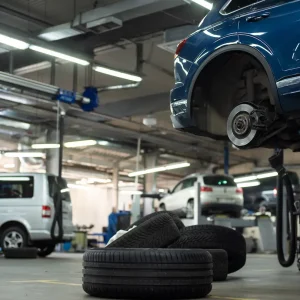Seeing how important AMAPs are to the economics of our industry, it’s astounding HMRC haven’t conducted a proper consultation, writes Rupert Saunders
I used to have some sympathy for our friends at the revenue (HMRC). Indeed, I’ve even used these pages in the past to defend their policy over fuel compensation rates; usually set against a background of wildly fluctuating fuel prices and totally over-optimistic official fuel consumptions.
But the latest shambles of a consultation on Approved Mileage Payments (AMAPs) is forcing me to change my mind.
In case you missed it – and most of us did – HMRC ‘issued’ a consultation paper back in May asking for comments on three possible approaches to reform of the AMAP structure. I use the word ‘issued’ rather hesitantly because it is unclear who the consultation paper was circulated to.
Although it asked for “views from all representatives from industry and business with an interest in company cars, employee car ownership schemes and mileage allowances”, the document was not press-released or circulated to the trade press. It’s not even available on the ‘Consultations’ page of the HMRC website. However, with just about a week to go until the consultation period ends (July 31), you can read the proposals online (HMRC’s final call for AMAP response).
Given the importance of AMAPs to the fundamental economics of our industry, and the Government’s long-standing pledge to review the rates, this apparent lack of communication is astounding. But then HMRC has changed fuel-only compensation rates twice this year – and they didn’t tell us about that either.
Tax neutral
|
“The consultation paper was not circulated to the trade press. It’s not even on the ‘Consultations’ page of HMRC’s website” |
|
Rupert Saunders |
As for the proposals themselves, it seems to me that they fundamentally change the intended purpose of AMAPs, which were introduced as a broadly tax-neutral device to compensate drivers who use their own cars on business mileage.
The flat rate of 40p a mile (for the first 10,000 business miles) has the advantage of being simple to administrate but takes no account of actual cost. However, there is a hidden environmental element – drive an economical Fiesta diesel and you are likely to be quids-in; drive a thirsty V8 Range Rover and you will lose out.
Now HMRC wants to significantly beef-up this political element to AMAPs, saying it wants to know ‘whether the structure can be changed to encourage drivers to be more environmentally aware’.
So, the new proposals suggest aligning AMAPs to CO2 emissions. This would mean paying higher compensation for less polluting cars, which cost less to run already; and lower compensation for higher polluting cars. You don’t have to be an economist to understand that this flies in the face of the concept of ‘tax-neutral compensation’.
Whatever your view, please don’t let HMRC get away with this lack of consultation. You have a week to respond with your thoughts to: pa.harris@hmrc.gsi.gov.uk.





